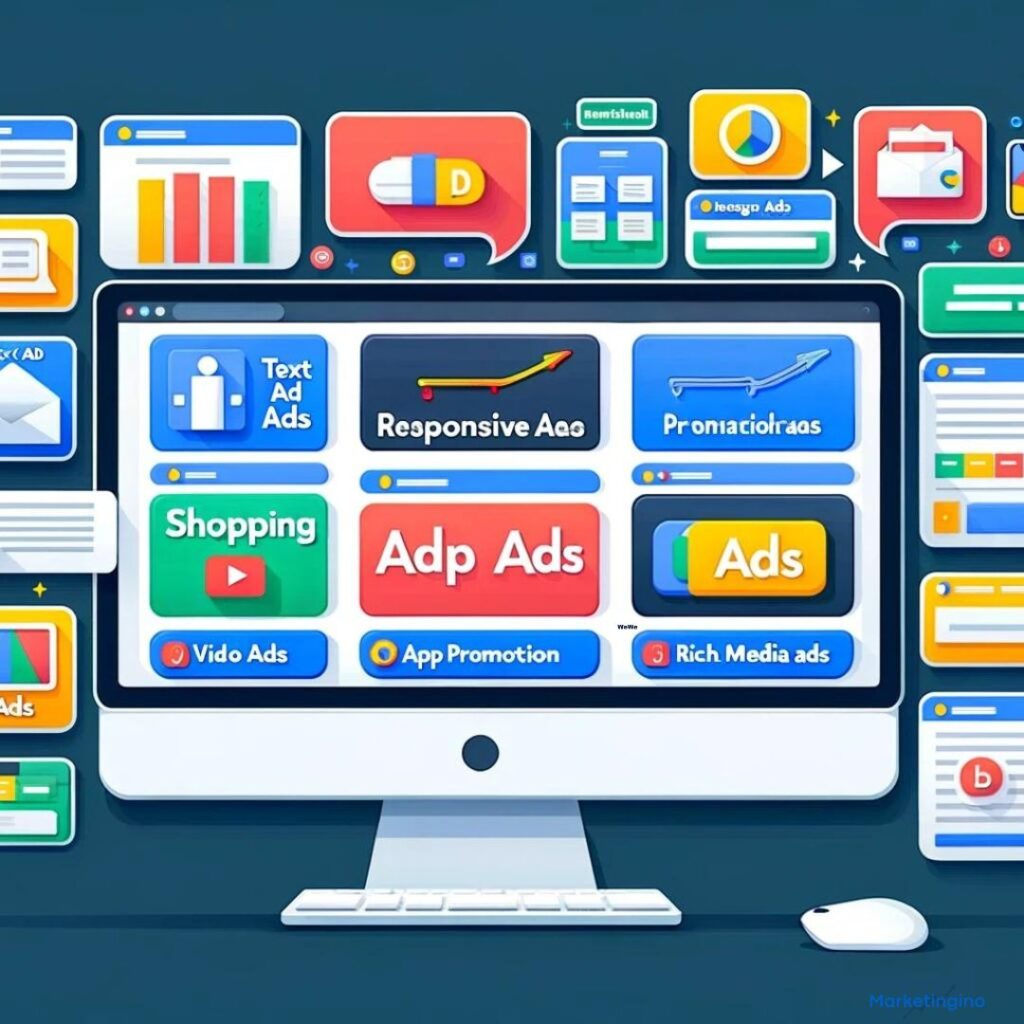Ad formats are the various elements that make up a Google Ad, including text, videos, images, and digital content. These formats are designed to engage users in different ways, depending on the nature of the ad and the platform where it appears. Understanding and utilizing the right ad formats can significantly enhance the effectiveness of an advertising campaign.
What are Ad Formats?
Ad formats refer to the different types of content that can be used in advertisements. Google Ads offers a variety of ad formats to cater to different marketing goals and audience preferences. Each format has its unique strengths and can be strategically used to attract attention, convey messages, and drive user actions.
Types of Ad Formats
- Text Ads: Text ads are simple yet effective, consisting of a headline, a display URL, and a short description. They are commonly used in search results and are ideal for conveying concise messages.
- Image Ads: Image ads use visuals to capture attention. These ads can appear in various sizes and placements across the Google Display Network, making them suitable for brand awareness and engagement.
- Video Ads: Video ads can be highly engaging, combining visuals and audio to tell a story or demonstrate a product. They are often displayed on YouTube and other video partner sites.
- Responsive Ads: Responsive ads automatically adjust their size, appearance, and format to fit available ad spaces. They can include a mix of text, images, and videos, providing flexibility and broad reach.
- Shopping Ads: Shopping ads display product images, prices, and merchant names, helping users find and compare products quickly. These ads appear in Google Shopping results and search results.
- App Promotion Ads: These ads are designed to drive app downloads and engagement. They can include text, images, and videos, and appear in search results, the Google Play Store, and within other apps.
- Rich Media Ads: Rich media ads include interactive elements like animation, audio, and clickable areas, offering a dynamic and engaging user experience. They are typically used in display advertising.
- Call-Only Ads: Call-only ads are tailored for mobile devices, encouraging users to call the business directly from the ad. These ads include a phone number and a call button.
How Ad Formats Work
- Creation: Advertisers create ads using the Google Ads platform, selecting the appropriate format based on their campaign objectives and target audience.
- Placement: The ad format determines where and how the ad will appear. For example, text ads primarily appear in search results, while video ads are displayed on YouTube.
- Optimization: Google Ads uses machine learning to optimize ad performance by testing different combinations of headlines, descriptions, images, and videos to find the most effective version.
- Targeting: Ads can be targeted based on keywords, user behavior, demographics, and other criteria to ensure they reach the most relevant audience.
Benefits of Ad Formats
- Versatility: Multiple ad formats allow advertisers to choose the best way to communicate their message, whether through text, visuals, or multimedia.
- Enhanced Engagement: Interactive and visually appealing ad formats can capture user attention more effectively and encourage higher engagement rates.
- Better Reach: Different ad formats can be used across various platforms and devices, helping advertisers reach a broader audience.
- Improved Performance: Using a mix of ad formats can improve overall campaign performance by appealing to different user preferences and behaviors.
Challenges of Ad Formats
Despite their advantages, ad formats also present challenges:
- Complexity: Managing multiple ad formats requires a good understanding of each format’s strengths and best practices.
- Resource Intensive: Creating high-quality image and video ads can be resource-intensive, requiring more time and budget than text ads.
- Performance Tracking: Analyzing the performance of different ad formats and optimizing them can be complex, requiring sophisticated analytics and testing.
Ad formats are essential components of Google Ads, enabling advertisers to present their messages in diverse and engaging ways. By leveraging the right mix of ad formats, businesses can enhance their advertising efforts, reach their target audience more effectively, and achieve better campaign results. As digital advertising continues to evolve, staying informed about the latest ad formats and best practices will be crucial for maintaining a competitive edge.




